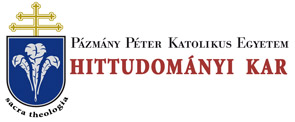Folia Theologica et Canonica, Supplementum (2016)
Hanns Engelhardt, Marriage and Divorce In Anglican Canon Law
56 HANNS ENGELHARDT recently been challenged - at least as far as England is concerned - by Rebecca Probert. She contends that a valid marriage, even a clandestine one, at least required that the declarations of consent were made in the presence of a clergyman of the established church, not necessarily of the parish priest of one of the spouses; otherwise the declaration gave the couple, one against the other, only a claim to have the marriage regularly solemnized.” Probert’s opinion, derived from a scrutiny of the jurisprudence of the ecclesiastical courts, seems to be confirmed by the practice of the so-called Fleet Marriages, marriages solemnized by clergy without proper authority - sometimes perhaps even pretended clergy - in the Fleet Prison of London and its so- called "Rules’, i.e. the area around the prison building in which debt prisoners under specific conditions were pennitted to live and work in their normal profession.23 24 These marriages were regarded as clandestine because they did not meet the canonical requirements of a regular marriage, i.e. due publication of banns in the parish church of at least one of the parties and declaration of consent in the presence of the parish priest. In England, clandestine Marriages were prohibited at least since the Council of Westminster of 1175. This council determined that no person should solemnize a marriage in any clandestine manner saying Nullus Fidelis cuiuscunque Conditionis sit, occulte Nuptias faciat, sed a Sacerdote publice nubat in Domino. Si quis ergo Sacerdos aliquos occulte conjunxisse inventus fuerit, triennio ab Officio suspendatur.25 But this prohibition did not render the clandestine marriages invalid. The decrees of the Council of Trent may have been referred to with approbation by English civilians;26 however, they were not promulgated nor received in England and therefore had no standing in the Church of England.27 The Canons of 1603/042* changed little in what was required for a regular marriage since the early times of Christianity in England.29 Regulations concerning marriage were contained in can. 99 through can. 108. Of these can. 99 forbade marriages within the degrees prohibited which were set forth by a table 23 Probert, R., Marriage Law and Practice in the Long Eighteenth Century A Reassessment, Cambridge 2009. 35. 24 Cf. Brown, R. L., The Rise and Fall of the Fleet Marriages, in Outhwaite, R. B. (ed.), Marriage and Society. Studies in the Social History of Marriage, New York 1981. 117-136, especially 117, n. 3. 25 Can. 17; cf. Godolphin, J., Repertorium Canonicum: Or, An Abridgment of the Ecclesiastical Laws of This Realm: Consistent with the Temporal, London 1687.3 57. 26 Helmholz, R. H., Roman Canon Law in Reformation England, Cambridge 1990 (repr. 2004) 146. 27 Bray, G. (ed.). The Anglican Canons 1529-1947, Woodbridge-Rochester NY. 1998. xlii. 28 Bray, G. (ed.), The Anglican Canons 1529-1947, 292-453. 29 Probert, R., Marriage Law and Practice, 167.
